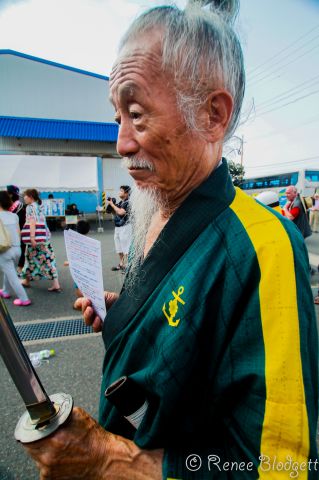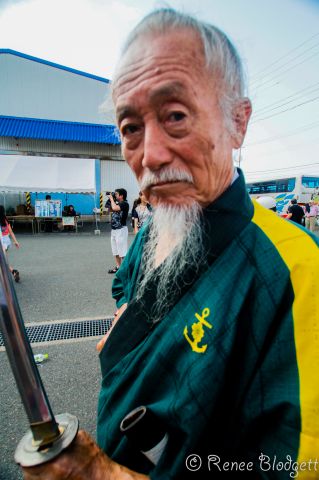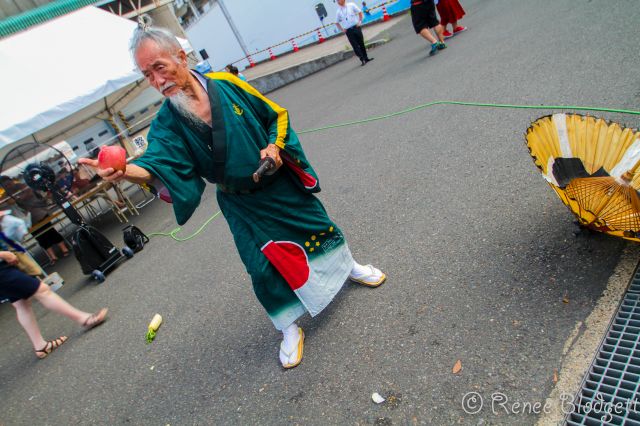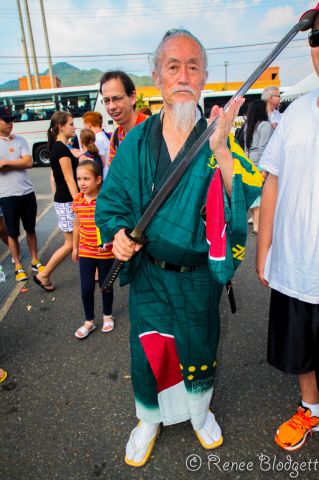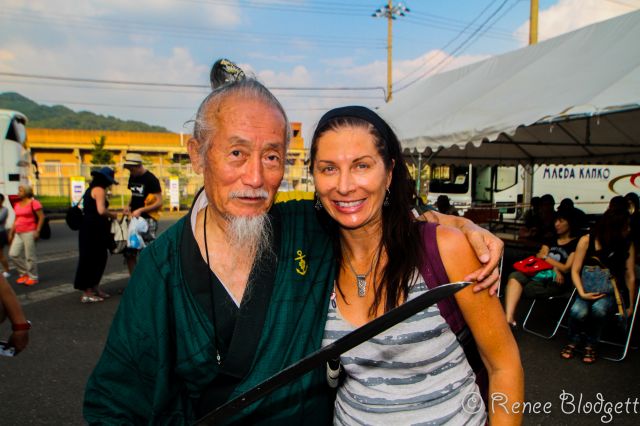Some people are into fighting and love swords, others are into history and love swords, others just like the cultural aspect of swords. For me, I simply know nothing about them except that like most people, the Samurai Sword has always held some mystic for me.
I ran into a Samurai warrior at the port of Nagasaki in Japan on my most recent trip this summer. He taught me a thing or two about swords, mainly how they’re held and how he USED them. In other words, it wasn’t something I touched or played around with.
I learn from someone who has known him for years, that some of the more commonly known types of Japanese swords are the katana, wakizashi, and tachi. For nihonto, the type classifications indicate the combination of a blade and its mounts, as this then determines the style of use of the blade.
Samurai is the name that comes to mind when you think of swords. The word came to mean nobility and while I haven’t spent time around a lot of Samurai warriors, I have met a few over the years and they all exude the feeling of noble-ness.
By the end of the 12th century, samurai became almost entirely synonymous with bushi, and the word was closely associated with the middle and upper echelons of the warrior class. The samurai followed a set of rules that came to be known as bushidō. While the samurai numbered less than 10% of Japan’s population, their teachings can still be found today in both everyday life and in modern Japanese martial arts. It was fascinating to watch this man…no longer young, in action.
His hands were still very quick and he had a sense of serenity about him that was lovely to be around.
For more posts on Japan, see our Japan section and on Tokyo, visit our Tokyo Japan / top things to do in Tokyo section.
Note: the trip to Japan was hosted by Princess Cruises, including the stop in Nagasaki, however all opinions expressed are entirely my own.

Renee Blodgett is the founder of We Blog the World. The site combines the magic of an online culture and travel magazine with a global blog network and has contributors from every continent in the world. Having lived in 10 countries and explored nearly 80, she is an avid traveler, and a lover, observer and participant in cultural diversity.
She is also the CEO and founder of Magic Sauce Media, a new media services consultancy focused on viral marketing, social media, branding, events and PR. For over 20 years, she has helped companies from 12 countries get traction in the market. Known for her global and organic approach to product and corporate launches, Renee practices what she pitches and as an active user of social media, she helps clients navigate digital waters from around the world. Renee has been blogging for over 16 years and regularly writes on her personal blog Down the Avenue, Huffington Post, BlogHer, We Blog the World and other sites. She was ranked #12 Social Media Influencer by Forbes Magazine and is listed as a new media influencer and game changer on various sites and books on the new media revolution. In 2013, she was listed as the 6th most influential woman in social media by Forbes Magazine on a Top 20 List.
Her passion for art, storytelling and photography led to the launch of Magic Sauce Photography, which is a visual extension of her writing, the result of which has led to producing six photo books: Galapagos Islands, London, South Africa, Rome, Urbanization and Ecuador.
Renee is also the co-founder of Traveling Geeks, an initiative that brings entrepreneurs, thought leaders, bloggers, creators, curators and influencers to other countries to share and learn from peers, governments, corporations, and the general public in order to educate, share, evaluate, and promote innovative technologies.

